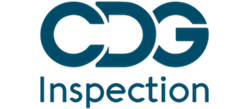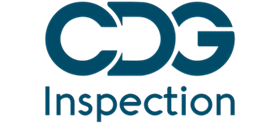Introduction:
In the pharmaceutical industry, ensuring the safety, quality, and efficacy of medicinal products is of paramount importance. Current Good Manufacturing Practices (cGMP) are regulatory standards established by health authorities worldwide to guarantee the production of safe and effective pharmaceuticals. CDG Inspection Limited, a hypothetical pharmaceutical manufacturing company, operates in a highly regulated environment where adherence to cGMP is not only a legal requirement but also a fundamental commitment to public health. Senior management at CDG Inspection Limited plays a pivotal role in maintaining cGMP compliance, as their decisions and actions significantly impact the company’s operations and reputation.
This essay explores the responsibilities of senior management in maintaining cGMP compliance at CDG Inspection Limited. It delves into the significance of cGMP in pharmaceutical manufacturing, outlines key cGMP regulations, discusses the role of senior management, and provides recommendations for effective compliance management. To comprehensively cover this topic, the essay will span approximately 3,000 words.
Understanding cGMP in Pharmaceutical Manufacturing
a. The Significance of cGMP
Current Good Manufacturing Practices, commonly referred to as cGMP, are a set of guidelines and regulations that govern the manufacturing and quality control of pharmaceuticals, biologics, and medical devices. These practices are vital in ensuring that products are consistently produced to meet quality standards and pose no harm to consumers. The primary objectives of cGMP include:
- Ensuring product safety: cGMP guidelines aim to prevent contamination, mix-ups, and errors that could harm consumers.
- Ensuring product quality: cGMP regulations ensure that products are consistently high-quality and meet established specifications.
- Meeting regulatory requirements: Compliance with cGMP is a legal requirement enforced by health authorities such as the U.S. Food and Drug Administration (FDA) and the European Medicines Agency (EMA).
- Building consumer trust: Adherence to cGMP standards enhances a company’s reputation and fosters trust among consumers and healthcare professionals.
b. Key cGMP Regulations
To maintain cGMP compliance, pharmaceutical companies like CDG Inspection Limited must adhere to a set of regulations and guidelines. Some of the key cGMP regulations include:
- Documentation and record-keeping: Detailed documentation of manufacturing processes, equipment calibration, and quality control tests is essential to demonstrate compliance and traceability.
- Personnel training and qualification: Ensuring that employees are adequately trained and qualified for their roles is crucial to prevent errors and maintain product quality.
- Facilities and equipment: Facilities must be designed and maintained to prevent contamination, and equipment must be calibrated and validated regularly.
- Quality control and testing: Rigorous testing and quality control procedures must be in place to verify product quality and safety.
- Product labeling and packaging: Accurate labeling and proper packaging are vital to prevent errors and ensure product integrity.
- Change control procedures: Any changes to manufacturing processes, equipment, or formulations must be thoroughly evaluated and documented.
Senior Management’s Role in cGMP Compliance
a. Setting the Tone at the Top
Senior management at CDG Inspection Limited plays a critical role in establishing a culture of cGMP compliance within the organization. They must lead by example and demonstrate an unwavering commitment to quality and safety. Key responsibilities of senior management in setting the tone at the top include:
- Defining the company’s commitment to cGMP compliance through a clear mission statement and policies.
- Allocating sufficient resources, both financial and human, to support cGMP initiatives.
- Encouraging a culture of transparency, accountability, and continuous improvement.
- Demonstrating a strong commitment to ethics and integrity in all business dealings.
- Ensuring that all employees understand the importance of cGMP compliance and their role in achieving it.
b. Establishing a Robust Quality Management System (QMS)
A well-defined Quality Management System (QMS) is a cornerstone of cGMP compliance. Senior management is responsible for establishing and maintaining an effective QMS at CDG Inspection Limited. Key elements of a robust QMS include:
- Document control: Implementing procedures for document creation, approval, distribution, and retention to ensure accurate and up-to-date documentation.
- Change control: Developing procedures for evaluating and managing changes to processes, equipment, or products to prevent deviations from cGMP standards.
- Corrective and preventive actions (CAPA): Establishing a CAPA system to address and rectify deviations, non-conformances, and quality issues promptly.
- Auditing and self-inspection: Conducting regular internal audits and self-inspections to identify and rectify compliance gaps.
- Risk management: Implementing risk assessment processes to proactively identify and mitigate potential quality and safety risks.
- Continuous improvement: Encouraging a culture of continuous improvement and innovation to enhance cGMP compliance processes.
c. Ensuring Compliance with Regulatory Requirements
Compliance with cGMP regulations is not optional but a legal requirement. Senior management must ensure that CDG Inspection Limited complies with all relevant regulatory requirements. This involves:
- Staying informed about changes in cGMP regulations and ensuring that the company promptly adapts to new requirements.
- Establishing clear lines of communication with regulatory agencies to address inquiries, inspections, and submissions promptly.
- Designating a Regulatory Affairs team responsible for managing interactions with regulatory authorities.
- Ensuring that all products are registered and approved before being marketed.
d. Risk Management and Contingency Planning
Identifying and managing risks is essential in maintaining cGMP compliance. Senior management should lead efforts to proactively identify and mitigate risks that could impact product quality and safety. Key responsibilities in risk management and contingency planning include:
- Conducting risk assessments to identify potential threats to cGMP compliance.
- Developing contingency plans to address potential disruptions to the supply chain, manufacturing processes, or product quality.
- Ensuring that the company has adequate insurance coverage to mitigate financial risks associated with compliance issues.
- Establishing a crisis management team and communication plan to respond effectively to compliance-related crises.
e. Resource Allocation and Investment in Infrastructure
Senior management must allocate resources strategically to support cGMP compliance efforts. This includes investing in infrastructure, technology, and personnel to maintain and enhance compliance. Key considerations in resource allocation include:
- Budgeting for quality and compliance initiatives, including personnel training, equipment maintenance, and quality control testing.
- Evaluating the need for capital investments in facilities, equipment, and technology to improve compliance.
- Allocating human resources to key roles such as Quality Assurance and Regulatory Affairs.
- Monitoring the return on investment (ROI) of compliance-related expenditures.
f. Talent Acquisition and Development
A skilled and knowledgeable workforce is essential for cGMP compliance. Senior management should be actively involved in talent acquisition and development to ensure that the organization has the expertise needed to meet compliance requirements. Key responsibilities in this area include:
- Identifying skill gaps within the organization and developing training programs to address them.
- Recruiting and retaining talent with expertise in cGMP compliance, quality management, and regulatory affairs.
- Encouraging ongoing professional development and certification for employees in relevant roles.
- Promoting a culture of learning and knowledge sharing within the organization.
Recommendations for Effective cGMP Compliance Management
a. Implement a Robust Training Program
To ensure that all employees understand their roles in maintaining cGMP compliance, CDG Inspection Limited should establish a comprehensive training program. This program should cover cGMP regulations, company policies and procedures, and specific job-related tasks. Key components of an effective training program include:
- Regular training sessions for both new hires and existing employees.
- Assessment and certification of employees’ understanding of cGMP principles.
- Periodic refresher courses to keep employees up-to-date with changing regulations.
- Cross-functional training to foster a better understanding of how different departments contribute to compliance.
b. Foster a Culture of Accountability
Accountability is a fundamental aspect of cGMP compliance. CDG Inspection Limited should foster a culture where employees at all levels take ownership of compliance-related tasks and decisions. To promote accountability:
- Clearly define roles and responsibilities for cGMP compliance within job descriptions.
- Encourage employees to report compliance issues or deviations promptly without fear of reprisal.
- Recognize and reward employees for their contributions to compliance efforts.
- Conduct regular performance evaluations that include an assessment of compliance-related responsibilities.
c. Invest in Technology and Automation
Modern pharmaceutical manufacturing can benefit significantly from technology and automation. CDG Inspection Limited should consider investing in state-of-the-art equipment and systems to enhance compliance. Benefits of technology and automation in cGMP compliance include:
- Improved data accuracy and traceability.
- Enhanced process control and monitoring.
- Faster detection of deviations and non-conformances.
- Reduction in human errors and manual record-keeping.
- Greater efficiency in quality control testing and reporting.
d. Conduct Regular Audits and Inspections
Internal audits and inspections are essential tools for identifying and rectifying compliance gaps. CDG Inspection Limited should establish a regular schedule for internal audits and inspections to assess compliance with cGMP regulations. Key aspects of a robust auditing program include:
- Independent audit teams comprised of qualified personnel.
- Thorough examination of all cGMP-related processes, documentation, and facilities.
- A systematic approach to identifying and documenting compliance issues.
- Timely corrective and preventive actions in response to audit findings.
- Continuous improvement of audit processes based on lessons learned.
e. Stay Informed and Engage with Regulatory Authorities
To stay ahead of changing regulations and industry best practices, CDG Inspection Limited should actively engage with regulatory authorities and industry organizations. Key strategies for staying informed and engaged include:
- Regularly review and analyze guidance documents and updates from regulatory agencies.
- Participate in industry conferences, seminars, and working groups to share knowledge and insights.
- Establish a Regulatory Affairs team responsible for liaising with regulatory authorities.
- Develop a proactive approach to regulatory compliance by anticipating and preparing for future regulatory changes.
f. Measure and Report Key Performance Indicators (KPIs)
Effectively managing cGMP compliance requires the measurement and reporting of key performance indicators (KPIs) related to quality and compliance. CDG Inspection Limited should establish a set of relevant KPIs to track and evaluate compliance efforts. These may include:
- Percentage of products meeting quality specifications.
- Number and severity of compliance deviations.
- Timeliness and effectiveness of corrective and preventive actions.
- Results of customer complaints and product recalls.
- Performance in regulatory inspections and audits.
- Employee training and certification rates.
Conclusion:
Maintaining cGMP compliance is not just a regulatory obligation for pharmaceutical manufacturers like CDG Inspection Limited; it is a moral imperative and a commitment to public health. Senior management plays a central role in upholding cGMP standards and ensuring the safety and quality of pharmaceutical products. Their responsibilities encompass setting the tone at the top, establishing a robust Quality Management System, ensuring regulatory compliance, managing risk, allocating resources wisely, and nurturing talent.
By adhering to cGMP regulations and implementing effective compliance management strategies, CDG Inspection Limited can not only meet its legal obligations but also build a strong reputation for quality and safety in the pharmaceutical industry. Continuous improvement, proactive engagement with regulatory authorities, and a culture of accountability are essential elements in the journey towards maintaining cGMP compliance and safeguarding the well-being of patients worldwide.





Your article helped me a lot, is there any more related content? Thanks!